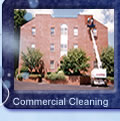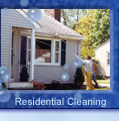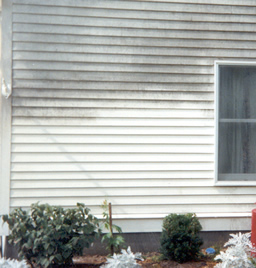 |
 |
|||||||
 |
 |
 |
 |
 |
 |
 |
||

MOBILE POWER WASH "Exterior Surface Licensed & Insured PROBLEMS WITH: WE HAVE SOLUTIONS!
P.O. Box 1511
© Mobile Power Wash of New England - All rights reserved |
MILDEW
A more thorough understanding of its causes and effects- and how they can be controlled can save considerable time, effort and expense. Mildew is the visible result of a type of fungus growth.... a mold that grows on the surface of organic and inorganic matter. It frequently attacks exterior surfaces, particularly those situated in warm, humid or shady locations. Mobile Power Wash of New England performed a cleaning test patch on this residence (above right). Notice the color difference? This is an actual unretouched photo. The clapboard siding was stained with an oil based cream colored solid stain. The solid color stain was in great shape but infested with mildew. Our customer was ecstatic after we finished cleaning because two painting companies had advised him the only remedy was a paint job. The most common mildew is dark gray, but some mildew can be black, brown, red, green, purple or other colors. Mildew fungi live directly on the substrate and must obtain all their nutrients directly from the surfaces on which they grow. It appears as tiny spots of gray, brown, black or purple discoloration resulting in a dirty, unattractive appearance, which becomes progressively worse due to the entrapment of dirt in the mold web. Mildew generally appears in two forms, a spore type, which resembles caviar in appearance, or a mycelium or filament type. Mildew is not caused by paint. It can grow on many types of surfaces. Like any living organism, the mildew fungus requires food. It flourishes on the nutrients found on top of the house paint/stain (such as dirt), and on the wood beneath the paint film. It quite often grows completely through the paint film, much like the roots of a tree, bringing about a complete deterioration of the paint. Mildew and Painting Paint manufacturers have tried to solve the mildew problem by developing paints with the most mildew resistant materials - further supplemented with mildewcide and mildewstat agents. Unfortunately, any good mildew resistant paint film is only as good as the surface preparation prior to repainting. If mildew is definitely present on the surface to be painted or stained, it is necessary to do a thorough job of cleaning and sanitizing that surface before any painting or staining is started. It is important to make the paint or stain application as soon as possible after cleaning to prevent possible mildew spore growth from reoccurring. Just remember to allow sufficient time for the surface to dry before attempting to repaint. A mildewcide is a chemical treatment added to paint, stain or clear transparent finishes that retards the proliferation of mildew fungi from growing. It is a killer of mildew fungi. Mildewcides are used in paints, stains, and latex finishes.. Interference with Paint Adhesion Paints are designed to have excellent adhesion to a variety of surfaces. Depending on the paint manufacturer's intentions, a particular paint may be designed to adhere to wood, masonry, vinyl, aluminum, and/or other substrates. The presence of mildew or other foreign matters such as oil, grease, dirt, tree pollens, and/or other substances on a substrate interferes with the adhesion characteristics of the paint. It is in the homeowner's best interest to ensure that the substrate to be painted is properly cleaned and prepared prior to painting. Intercoat Adhesion to Paints When mildew has grown on a surface, a homeowner may think he can improve the appearance by applying a coat of finish directly over the mildewed surface. This approach is not a desirable cure. Instead, this new coat of finish provides protection for the existing mildew, preventing its removal, and can actually provide a nutrient source to facilitate new mildew growth. Because of the infestation below the newly finished surface, mildew will certainly appear again on the new surface. In addition to the poor appearance of the mildew, a greater problem now exists with the adhesion of the new finish to the old finish, a property commonly referred to as intercoat adhesion. By not following good surface preparation procedures, the homeowner has allowed the mildew to exist between the old and new coats of finish. Intuitively and quantitatively, we know that this mildew interferes with the new finish's ability to adhere to the old finish. Early failures such as cracking, flaking, blistering, can be expected. To insure the best intercoat adhesion, an appropriate method of surface preparation must be followed. Natural oils, such as linseed oil (which is derived from the flax seed) and tung oil, are food for mildew. Extractives in wood that might migrate to the surface, such as tannins, carbohydrates and fats in the wood cells are also food sources for mildew. Mildew fungi may live on paint, stain and clear wood finishes, especially on surface coatings not containing a proper amount of mildewcide. Mildew fungi live on coated wood surfaces, but do not eat the lignin or cellulose in the wood as do wood rotting fungi. They also contribute to the gray discoloration of unfinished wood. Many properties coated with oil base solid color stains seem to suffer from reoccurring mildew problems. Most of these oil based solid color stains contain linseed oil which tends to "feed" the mildew. Recoating the property with latex based solid color stain seems to aid in slowing down the reoccurrence of mildew. Identifying Mildew Mildew spores can be distinguished from dirt by examination under a 10-power magnifying glass. When wet, mildew fungi are threadlike in growth. When dry, the fungus has many egg-shaped spores. Unlike mildew, particles of dirt are irregular in size and shape. Another quick test is to take a small amount of household bleach in an eyedropper and apply it to an area suspected of being infected with mildew. If the area starts to change color and lighten, it is probably mildew. It should be stated that dirt can accumulate quite easily on horizontal surfaces just from ordinary foot traffic or the household pet that gets into the mud on occasion. If dirt is not removed periodically, the mold spores then have a chance to attach to the dirt and the foot traffic braids it into the wood fiber. Deck owners would be surprised to see how well their deck would look if they only washed it whenever dirt was evident. On wood, nature's sequence of events takes place like an army of soldiers all designed to perform a specific task. Of course, they are assisted by two important regiments -- UV sunlight and moisture. Mildew is most commonly found where air movement is restricted and where dew or dampness is present. The next soldier to take charge in the destruction process is algae. Unlike mildew, algae is able to produce nutrients through photosynthesis. The effects of algae on a coated surface are recognized as the starting point for more serious biological problems and a challenge to the integrity to the coating and the substrate. Can Mildew be stopped? The frequent return of mildew can be very frustrating for property owners who expect a one shot cure all approach to combating the war on mildew. While ineffective cleaning techniques can be partially to blame for the quick return of mildew, many times we should look deeper to see what factors aided in the return of mildew. Remember as stated prior - there is no absolute prevention against the return of mildew if conditions ideal for its growth. However, many times factors we can control are present and when they are altered the time it takes for mildew to return is normally extended.
Why is my property moldy? Listed below are possible contributing factors for mildew. Your property may have one or more of the following
|
 Mildew
is one of the most common and persistent causes of house paint failure. Its
cost to the nation's homeowners amounts to hundreds of thousands
of dollars every year.... much of this needlessly. There is no absolute
prevention against mildew on paint film under conditions ideal to its growth.
Mildew
is one of the most common and persistent causes of house paint failure. Its
cost to the nation's homeowners amounts to hundreds of thousands
of dollars every year.... much of this needlessly. There is no absolute
prevention against mildew on paint film under conditions ideal to its growth.